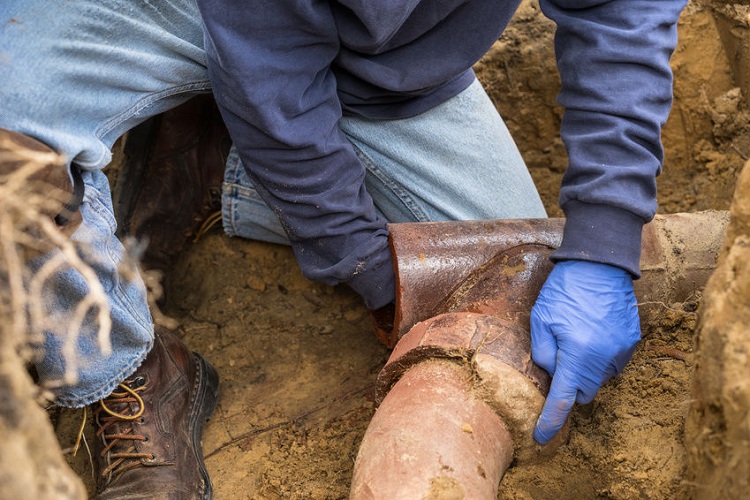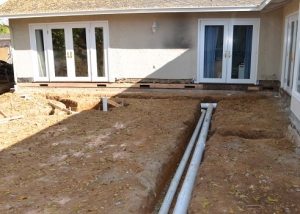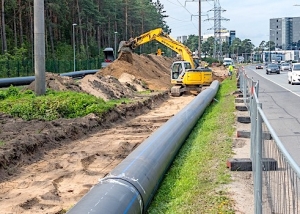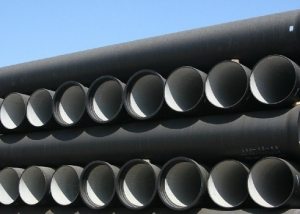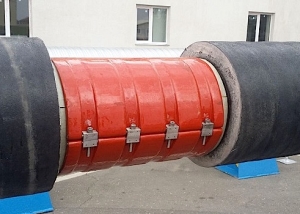Sewer drain pipes are products that are used in the installation of sewer communications. These devices are classified primarily by the material from which they are made, as well as by their intended use. Today, there are many drain pipes that differ in functional characteristics. In order to select the necessary products for a specific situation, you need to pay attention to their characteristics.
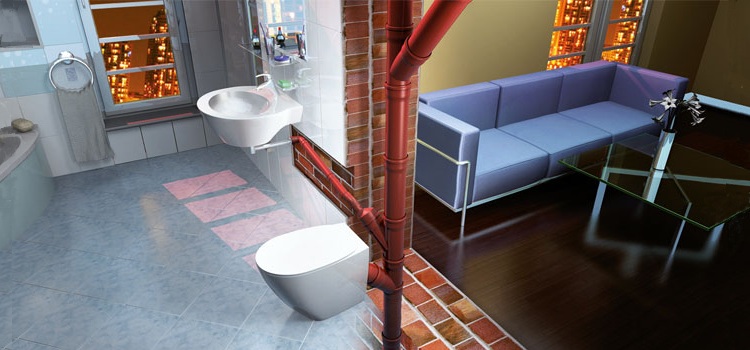
The drain pipe is an important part of the sewer system at home, the work of all plumbing fixtures depends on its quality and proper installation
Content
Types of drain pipes
According to the material of manufacture, all drain pipes are classified into:
- copper products
- steel
- cast iron parts,
- ceramic;
- asbestos;
- reinforced concrete drain products;
- plastic fixtures;
By designation, such products are divided into two main types:
- external (laid outdoors);
- internal (laid indoors).
Note! External drainage systems for sewage, as a rule, are made of materials that are distinguished by good corrosion resistance: metal (painted), galvanized steel, special polymers, etc. And internal systems must be equipped with sound insulation and have a presentable appearance.
External systems mounted outside the building or in the ground in the area adjacent to it must necessarily have certain properties, such as:
- resistance to temperature changes;
- resistance to pressure.
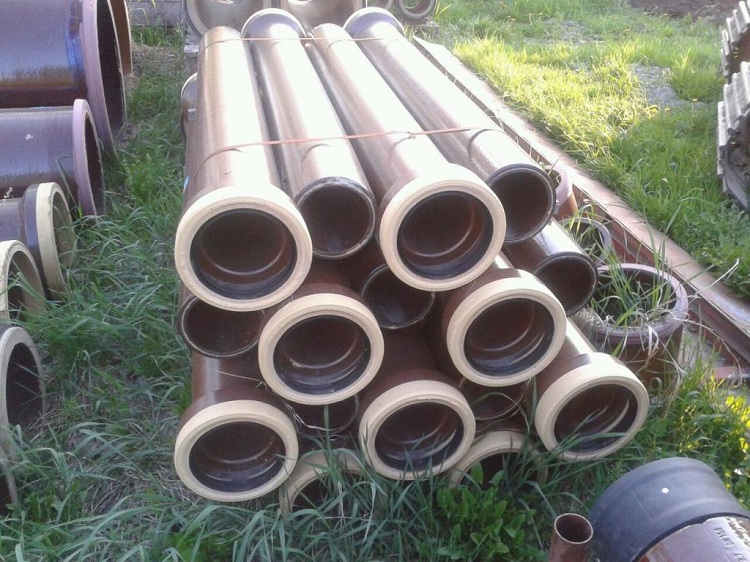
The type of drain pipe is selected depending on which part of the sewer it will be used - external or internal
For example, a drain pipe located in the kitchen may not be resistant to low temperatures, however, the corresponding fittings must have high sealing performance.
The cross-sectional indicators of such pipes are determined by the pressure and volume of the supplied fluid. Among other things, a very important indicator that determines the operational area of these products is the internal diameter, calculated in millimeters.
Consider the standard indicators of the inner diameter of the drain pipes that are used in household sewer communications:
- 5-10 mm - for a drain part, which is mounted from plumbing to water supply;
- 10–11 mm - for risers, as well as drains;
- 11-15 mm - for risers in multi-storey buildings;
- above 15 mm - for supplying the internal sewerage system to the central (common) riser.
Characteristics of drain pipes for sewage
A variety of materials allows us to expand the operational capabilities of this product. Drain pipes from various materials are used in various situations.
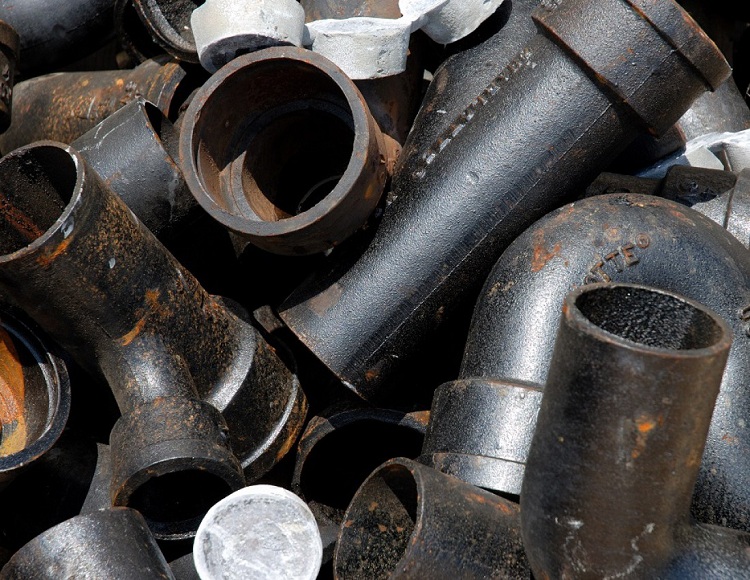
Cast iron and steel pipes are not particularly smooth surfaces, so their lumen narrows over time due to deposits
When choosing these products, it is worth paying attention to such important technical characteristics as:
- throughput indicator details;
- rigidity of the product.
The throughput of the drain part is a very important factor.Metal products have insufficiently smooth inner walls, therefore, over time, various salt deposits and other foreign particles accumulate on them, which entails a narrowing of the lumen of the pipe, and, accordingly, a decrease in throughput indicators. The lumen is narrowed until it is completely overgrown, as a result of which the pipe for draining wastewater fails and either its complete replacement or cleaning can help in this situation.
Pipes made of modern polymeric materials have smooth inner walls, so they almost completely eliminate the occurrence of such blood clots in the system. The excellent throughput of plastic pipes often determines their choice.
Hardness coefficient is also an important technical characteristic. The highest rigidity indicators are observed for metal, ceramic and concrete drain pipes, but not in all cases a high strength coefficient is an advantage.
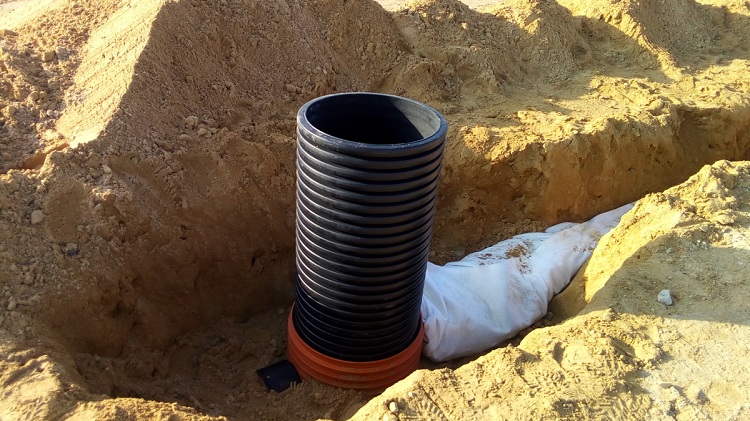
In conditions where the soil can move under the influence of various factors, polymer sewer pipes are used
When laying these products in seismically active areas or in regions with moving soil, as well as in the case of installation under roads and railways, materials that have a high stiffness coefficient are more prone to destruction. In such situations, flexible plastic drain products are used.
In addition, there are several other important characteristics that pipes for draining sewers should have:
- temperature stability;
- resistance to mechanical stress;
- groundwater resistance.
Due to its advantages over metal and other products, plastic pipes have become the most popular products today. Products made of polymeric materials have a large assortment.
Advantages of plastic drain pipes
Let us consider in more detail the main advantages of using polymer products during the installation of internal and external sewer drainage communications:
- affordable price. Plastic costs an order of magnitude less than any other material, which is very beneficial;
- light weight. Thanks to this, plastic parts are easy to transport and lay;
- durability. The operational life of such plastic parts during normal operation can reach up to 50 years;
- resistance to harmful corrosive effects, as well as to aggressive chemical compounds. A lot of aggressive chemical compounds are transported along the drain lines, therefore this property is very important and is taken into account when choosing and laying sewer drain communications;
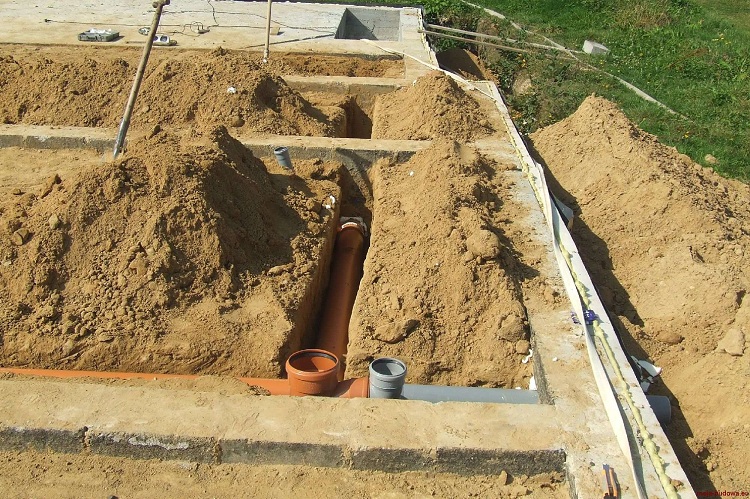
Polymer pipes are very durable and regularly perform their functions even when underground laying without any insulation
- low thermal conductivity. This property is especially important in regions with low temperatures. Due to the low thermal conductivity of plastic pipes, the contents transported through them do not freeze;
- a large selection of products, which allows you to mount the design of almost any configuration;
- environmental friendliness. Plastic products during operation do not emit substances harmful to human health, such as asbestos pipes.
How to replace drain pipes?
The process of replacing a drain pipe is a rather difficult event, however, if desired, it can be performed independently. To replace the drain sewer pipes, it is necessary to understand the essence of the process and to have the necessary tools.
Consider the list of tools that are needed to replace the drain communication:
- Bulgarian;
- hammer drill;
- Screwdriver Set;
- pliers;
- hammer;
- chisel;
- adjustable wrenches;
- special sealant (preferably silicone based).
Before proceeding directly to the replacement of pipes, you need to perform an accurate calculation of the materials that will be needed for this process. In addition, it is necessary to think in advance and draw up a plan for the passage of a new drain sewer system. And do not forget about the main thing - the correct selection of the individual elements of such communication (in terms of cross section, length, etc.).
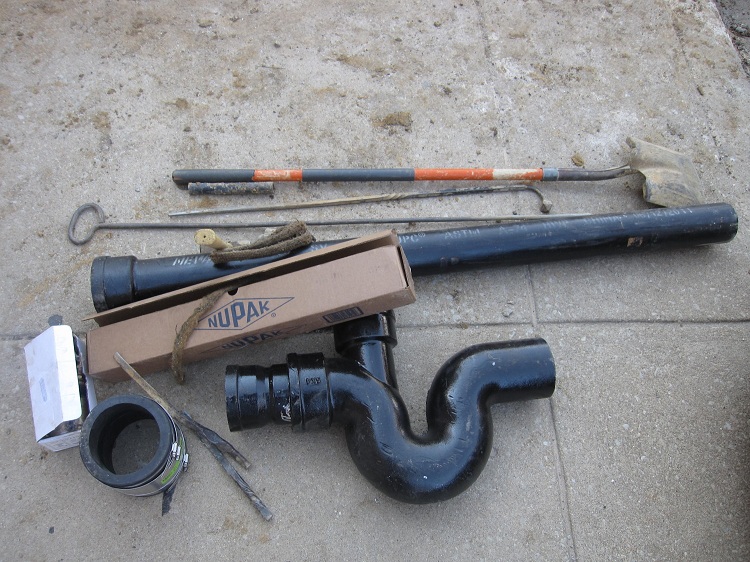
Before replacing the old sewage system, it is necessary to prepare new pipes of suitable section and connecting elements to them
If all of the above items are met, then you can begin to replace the drain sewer. First of all, you need to shut off the water, and then start dismantling the old communication. In order to simplify the dismantling work, it is recommended to remove all excess objects from the bathroom, including the sink. This will allow you to get more space and make the dismantling of old pipes as convenient as possible, as well as this measure eliminates the possible damage to plumbing fixtures and washing equipment.
After dismantling the old pipeline, it is necessary to prepare all the tools for laying a new drainage system. The first water intake point, as a rule, is the toilet.
Important! When installing a new drainage system, you must be careful and apply sealant to the joint before joining the two pipes. This will increase the sealing performance of the system.
Thus, the installation of all drain sewer pipes. Consider a few more important rules to remember:
- when laying a new communication, it must be borne in mind that it must have a certain bias towards the central riser. Typically, this slope is 5 °;
- under each corrugated pipe, the installation of a special cuff is recommended;
- experts do not recommend cutting individual elements of drainage communication
Slopes and cross-sectional indicators of drain pipes are shown in table No. 1.
Table 1
| Santechpribor | Required bias | The pipe cross-section for the drainage system, mm |
| Main riser | — | 100 |
| Retraction from the main riser | — | 65–75 |
| Bath | 1:30 | 40 |
| Sink | 1:12 | |
| Toilet bowl | 1:20 | 100 |
| Bidet | 30–40 |
Subject to all the above points, the new communication will last for many years. Otherwise, the risk of system breakdown in the first days of its operation increases, so it is imperative to take this matter seriously.
Dismantling the old drain
As already mentioned above, dismantling the old communication and installing a new one is a dirty and time-consuming undertaking, however, it can be completed if you have the necessary tools and a plan has been prepared for laying a new drainage system.
Dismantling begins with the preparation of the workspace. To do this, turn off the water in the pipes and dismantle the plumbing fixtures, remove the washing machine. To remove the toilet, you will need to disconnect the hose from the drain tank, which supplies water from the water supply. After dismantling the toilet, you can begin to dismantle the sewer.
The dismantling of the old drain structure must begin from the point that is farthest from the main riser. If the old pipeline is made of cast iron, it can simply be broken with a hammer, since cast iron has a rather weak resistance to mechanical stress.
Pipes that are located in the immediate vicinity of the central riser must be removed very carefully so as not to damage the riser. The old part must be removed by a grinder at a distance of 10-15 cm from the riser. The rest of the part must be rocked and carefully removed from the tee, which is cut into the central riser. It is very important to dismantle the drain pipe so that it does not harm the connecting element of the tee - the bell.If the dismantling was successful and the tee bell remained intact, the final step is to clean it from debris and dirt.
Installation of a new communication
When laying a new drainage system, the importance of tilting towards the riser must be considered. For products with different cross-sectional indicators, such a slope may differ.
For risers and exit from the toilet to the riser, products with a cross-sectional index of 100 mm are usually used. For other plumbing fixtures, as a rule, pipes with a cross-sectional index of 50 mm are used. The bias indicator of communication depending on the diameter of the products can be found by reading table No. 2.
table 2
| Pipe diameter mm | Slope per 1 m length, mm |
| 100 | 35 |
| 50 | 20 |
A pipe is laid from the main riser to the intake site No. 1, that is, to the toilet. In order to correctly dock the branch pipe with a socket cut into the riser of the tee, as a rule, a special sealing sleeve is used. Silicone joint is applied to the joint without fail.
Important! The pipeline is fixed at each joint. This is a necessary measure, since the junction of individual elements of the pipeline structure is considered the most vulnerable and prone to fractures.
In the same manner, pipes are laid for discharge to other water intake sites.
